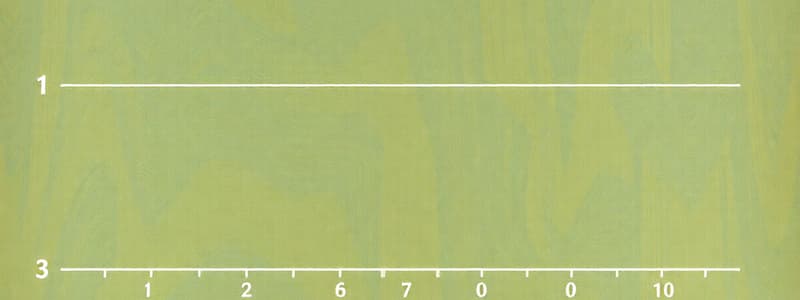Podcast
Questions and Answers
Which unit is typically used in the study of Mechanics?
Which unit is typically used in the study of Mechanics?
- Kelvin
- Meter (correct)
- Joule
- Coulomb
What is the primary objective of the 'Units and Measurements' section?
What is the primary objective of the 'Units and Measurements' section?
- Learning about historical developments in physics
- Understanding chemical reactions
- Calculating time in physics experiments
- Grasping how to quantify and measure physical quantities (correct)
What does SI stand for in the context of physics units?
What does SI stand for in the context of physics units?
- Systematic Integration
- Systéme International (correct)
- Standard International
- Systéme Incomplete
Which of the following is not a part of the SI system?
Which of the following is not a part of the SI system?
What is the alternative name commonly used for the SI system?
What is the alternative name commonly used for the SI system?
What do the letters MKS in the MKS system stand for?
What do the letters MKS in the MKS system stand for?
How is a unit in the SI system defined?
How is a unit in the SI system defined?
What is the result of multiplying 11.3 cm by 2.0 cm, rounded to the nearest whole number?
What is the result of multiplying 11.3 cm by 2.0 cm, rounded to the nearest whole number?
When rounded to the nearest whole number, what is the area of 11.3 cm by 2.0 cm?
When rounded to the nearest whole number, what is the area of 11.3 cm by 2.0 cm?
If the calculation of 11.3 cm times 2.0 cm results in 22.6 cm², what is the process to get to 23 cm²?
If the calculation of 11.3 cm times 2.0 cm results in 22.6 cm², what is the process to get to 23 cm²?
What would be the value of the area if we directly used the calculation without rounding?
What would be the value of the area if we directly used the calculation without rounding?
Which of the following is true regarding the area calculated from 11.3 cm and 2.0 cm?
Which of the following is true regarding the area calculated from 11.3 cm and 2.0 cm?
What is the newest definition of a second based on?
What is the newest definition of a second based on?
How many grams are there in one kilogram?
How many grams are there in one kilogram?
What fraction of a solar day is equal to one second?
What fraction of a solar day is equal to one second?
What is the unit symbol for kilogram?
What is the unit symbol for kilogram?
Which of the following is NOT true about the kilogram?
Which of the following is NOT true about the kilogram?
What defines the distance that light travels in a vacuum over a specific time period?
What defines the distance that light travels in a vacuum over a specific time period?
Which of the following is the SI base unit of time?
Which of the following is the SI base unit of time?
Which unit measures a distance equal to approximately 3.280 feet?
Which unit measures a distance equal to approximately 3.280 feet?
What is the value of one meter when converted to feet?
What is the value of one meter when converted to feet?
Which of the following time units is larger than one second?
Which of the following time units is larger than one second?
Study Notes
Course Overview
- Introduction to Physics, Units, and Measurements
- Mechanics
- Heat and Properties of Matter
- Electricity
Importance of Units in Physics
- Units are essential for measurement and expression of physical quantities.
- The SI system (Système International) is widely recognized and used in the scientific community.
SI (MKS) System
- SI is also referred to as the MKS system, which stands for meter-kilogram-second.
- It is a standard framework for measuring length, mass, and time among other quantities.
Time Definition
- The latest definition of a second is based on the oscillation of cesium atoms, specifically 9,192,631,770 oscillations.
- Previously, a second was defined as 1/86400 of a solar day.
Mass Unit
- Mass is expressed in kilograms (kg), where 1 kg equals 1000 grams (g).
- A standard kilogram is defined as the mass of a specific prototype kept in Paris.
Measurement Conversions
- Length conversions include standards such as 1 meter = 3.280 feet.
- Practical applications of these conversions are important in various scientific computations.
Studying That Suits You
Use AI to generate personalized quizzes and flashcards to suit your learning preferences.
Related Documents
Description
Explore the fundamentals of physics with a focus on units and measurements. Understand the significance of the SI system and how it is used for various physical quantities like mass and time. This quiz will also cover measurement conversions and the latest definitions of units.




